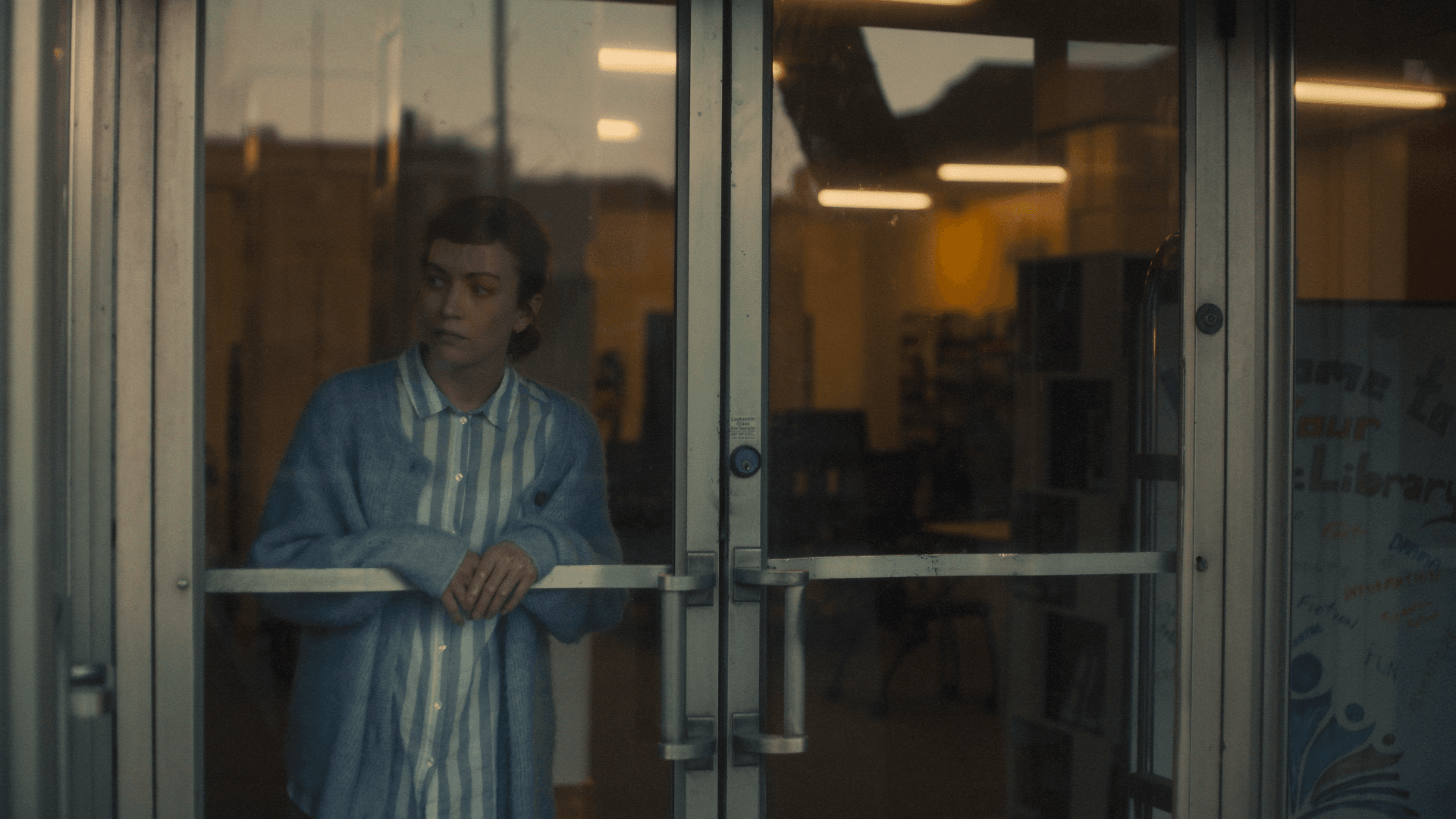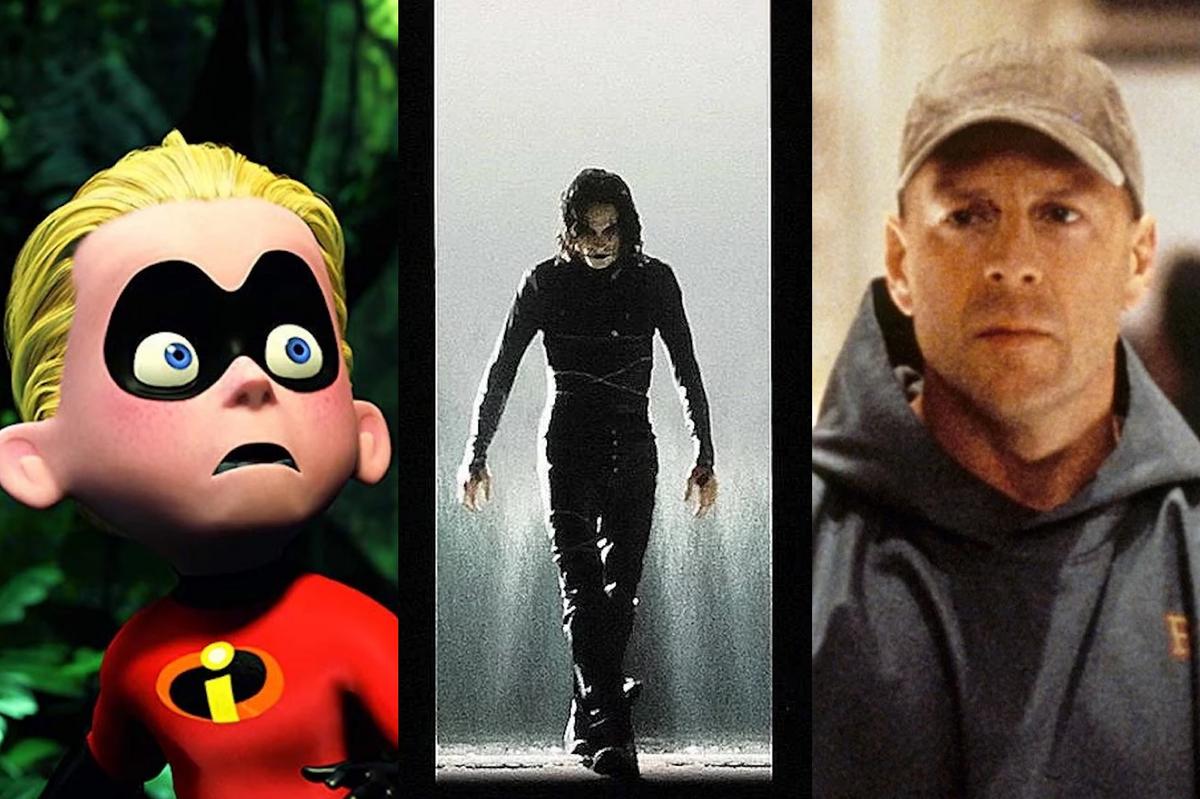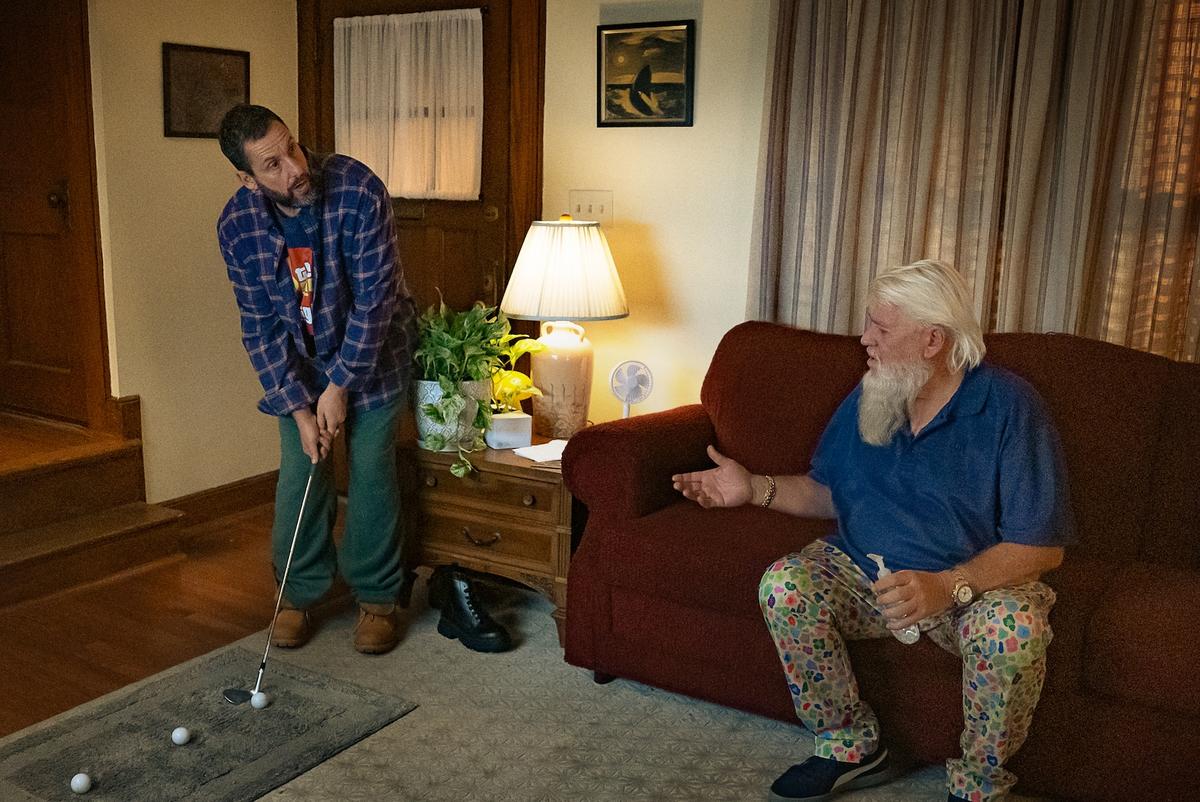Darkest Miriam elegantly and tragically captures the tenor of the current moment. Part thriller, part romance, part social critique, and a character study through and through, Darkest Miriam is the sort of quiet film that wraps the viewer in layers of detail without making things obvious. Through the complex arts of observation and performance, writer-director Naomi Jaye (adapting The Incident Report, a novel by Martha Baille) and lead Britt Lower tap into the sort of social and situational anxieties many have trouble articulating or explaining. Darkest Miriam presents its characters as complex human beings in their natural element, explaining only as much or as little as they want to the audience. And nothing feels missing. This is top quality filmmaking, and it’s nice to see that it was awarded with six well deserved Canadian Screen Award nominations this past week, including Best Picture.
Miriam Gordon (Severance star Britt Lower) is a librarian working in the fictional Allan Gardens branch of the Toronto Public Library system. Every day, Miriam deals with an array of colourful characters who pass through the doors of the library, many of them new immigrants, under-housed persons, or those battling mental illness. She generally keeps to herself and isn’t the chatty sort. She takes her lunches outside of the conservatory in the famed Allan Gardens park, where she makes a friendly and romantic connection with fellow green-space patron Janko (an impressive Tom Mercier, with whom Lower has exceptional chemistry), a Slovenian immigrant artist who works as a taxi driver. Amid her burgeoning relationship with Janko, Miriam begins to find disturbing, handwritten, and specifically personal letters written to her throughout the library. Who could be watching her and what is their motivation behind frightening her?
Darkest Miriam isn’t a mysterious thriller in any traditional sense. In fact, the identity of the letter writer always feels secondary to exploring the nature of Miriam’s paranoia, which was already in place before any of this started. Through a spectacular (and now award nominated) leading performance, Lower is able to convey Miriam’s discomfort and disconnection towards those around her. With an every-so-slightly twitchy face and lightly squirmy demeanour, it’s clear that it takes a lot for Miriam to open up personally. A lot of what the audience sees about the character has to be gleaned from body language, inner monologues, or the numerous incident reports Miriam files for any number of strange, unfortunate occurrences that unfold at the library on a daily basis. Even when she finds peace and solace in the company of Janko, there’s always something Miriam is holding back; afraid of opening up a mentally unhealthy can of worms and past traumas. One of the best scenes in this great film involves Miriam going to an emergency room after an accident and balking at answering some of the most basic intake questions.

It’s not that Miriam is trying to be obtuse or effusive, but rather that she is a product of a modern age that can be both distancing and overwhelming at the same time. Stylistically and narratively acting as a midway point between fellow Canadian contemporaries Atom Egoyan and Sofia Bohdanowicz, Jaye (The Pin) subtly injects low key fears about our world into the character of Miriam, all of which are properly measured and meted out in her star’s performance. Suffering abounds in seemingly banal spaces, and much like the tenor one uses to conduct themself in a library, people are asked to keep quiet about the things that bother them. One starts to wonder if what they are experiencing is a sign of an existential crisis, a mental illness, or if they aren’t the problem and the rest of the world is. Miriam isn’t as dark a figure as the title suggests, but she is going through something profoundly unsettling. Whether or not the Rigoletto referencing letters point to something more sinister is almost beside the point. Miriam is already a person frozen into place.
Jaye utilizes a very socially and economically specific area of Toronto to exceptional effect in Darkest Miriam. The area surrounding Allan Gardens is a place where natural beauty and the harsh truths about city life collide, and one side often ignores the other. There’s the lush beauty of the conservatory – populated frequently by families, people on dates, horticulturists – and also the open displays of poverty and hardship, as seen in frequent encampments and people who need the park as a sort of refuge from the rest of the city. It’s precisely the same kind of dichotomy that Miriam experiences within the library. There is no escape or middle ground for Miriam to find, and she is similarly helpless when it comes to making any sort of change or taking action. She’s just not in the position to help more than her limited authority as a librarian allows.
Jaye and Lower have made a humanist examination of modern malaise that is intriguing and thoughtfully constructed with careful observation and a lack of cynicism or ennui. Darkest Miriam is a film that is dialled into the modern moment and tenor with frightening accuracy, building to the sort of twist that the audience couldn’t predict. The final stages of Darkest Miriam will make the viewer want to reconsider everything that came before, but not in a mind shattering sort of way or to pick up on any sort of clues. Any reconsiderations of Jaye’s material are more soulful and intellectual in nature. One might be forgiven for thinking they don’t know much about the obtuse Miriam by the end of Jaye’s film, but really they’ve learned more than they think – about the character, about the city, and about their own preconceived notions of both.
Darkest Miriam opens in select Canadian theatres on Friday, March 28, 2025.




